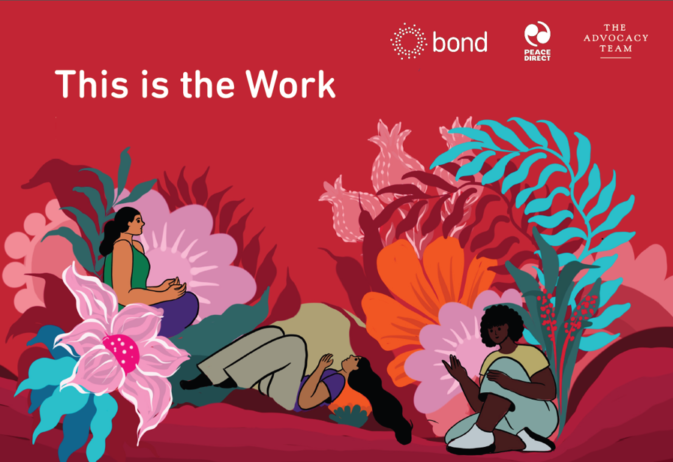5 tips for developing an organisational theory of change
When I first joined Brooke as head of performance and evaluation, I was tasked with helping the international animal welfare charity further its objective of becoming a truly evidence-based organisation.
Brooke already had a theory of change in place, but it wasn’t entirely fit for the purpose and so I initiated the process of revising it. Theory of what? – you may ask. Good question.
What is a theory of change?
A Theory of Change (ToC) describes how we believe change happens in the outside world in relation to our global goal.
A theory of change maps out the chain of results, the assumptions and the evidence which underpin these. The process usually results in a visual and a narrative (such as the one we have created for Brooke) that is used for multiple purposes: planning, strategic decision making, monitoring, evaluation, communication, influencing, etc.
To give a concrete example: The change that Brooke wants to see in the world is improved equine welfare, thriving equine-owning communities and a strong global animal welfare system. But how do we get there? For Brooke, the routes to this goal lead through strengthening livelihoods and resilience of communities, changing behaviour of equine owners and creating an enabling policy environment, to name just a few.
Why should you consider developing a theory of change?
Having an organisational ToC offers several benefits internally and externally.
Internally, a ToC provides a shared understanding of where we want to be and how we want to get there. As well as an end goal, a ToC is a process of collective reflection that brings together all staff in an organisation. Through the participatory nature of the exercise, it creates ownership and helps build commitment and motivation towards organisational goals.
For Brooke, developing a ToC has been an enriching and invigorating experience. The process enabled us to analyse our stakeholders, systems and power dynamics to re-define ourselves. It allowed us to critically explore and evidence how we perceive change and question our role in supporting the change we want to see. A tangible output of this journey is a document which offers a common visual and narrative that reflects our values, models and approaches to achieving impact.
A well-developed ToC acts as a powerful foundation for strategy and planning across the organisation. My colleagues in Brooke country programmes across the world use it to design their projects by contextualising the ToC to their local needs.
Externally, a ToC helps communicate our work in a more powerful way and influence others to join hands with us. We use our ToC to build new partnership and raise donors’ interest. A ToC offers an effective way of explaining what we do and why we do it to our partners, encouraging them to work with us. It helps donors see that what they give funds towards will actually happen.
We want our ToC to evolve with us as we refine our thinking. It is a living document, which we continuously collect feedback on and which we review periodically.
Subscribe to our newsletter
Our weekly email newsletter, Network News, is an indispensable weekly digest of the latest updates on funding, jobs, resources, news and learning opportunities in the international development sector.
Get Network News5 tips
If you’re thinking of developing or refining an organisational Theory of Change, you may feel confused or daunted by the undertaking. Don’t worry, you’re not alone! Bond’s learning paper takes you through the key process guidelines for organisations developing a theory of change. Here are my own top tips for an efficient and effective ToC development process that may help you get started.
- Gain traction at the highest level while stimulating discussion at lower levels
Ownership at all levels is key to the success of your ToC. At Brooke, about 100 people across the world were involved in the development of our ToC. Colleagues were offered the opportunity to input at various points during the process through face-to-face meetings, virtual meetings, and an online survey. Everyone was given a chance to comment on two iterations of a draft ToC. - Build on what already exists and open spaces to refine thinking
It is important for staff to recognise that what they’ve been working on for years isn’t discarded, but rather refined and improved on with the latest thinking. - Hire a good facilitator and make the process highly participatory
An external facilitator will be a great help as a neutral and impartial voice to guide any difficult discussions that the organisation may have to go through. - Use the DFID quality checklist for theories of change and map and assess the robustness of the evidence underpinning your assumptions.
- Design a communication plan from the outset to ensure participation and ownership
Even before developing terms of references for recruiting an external facilitator (if you decide to do so), consider developing an internal and external communication plan for the ToC. The plan should define your target audiences, communications channels and outputs.
And remember to have one lead person driving the process forward. Too many cooks in the kitchen create confusion! I hope you find the process of developing your ToC enriching and enjoyable just like I did.
Brooke would love to hear about your experience of developing or using a Theory of Change. Please get in touch!
Bond offers courses in Theory of change essentials and Theory of change essentials online. Contact [email protected] for information.
You can also join Bond’s MEL Group to hare learning and experience to help improve the practice of MEL.
Category
News & ViewsThemes
Operations and contracts



